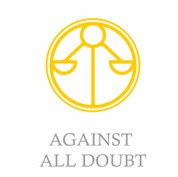What you can expect
What others say about me
The STRONG Model
With the STRONG model, you can take your life into your own hands and make yourself fit for life’s adventures!
You can find out more about the STRONG model here:Burnout prevention – A 5 Step plan
What I offer you
Why I became a Life Coach
You’re wondering what prompted me to become a life coach? After all, I have a full-time job?! Then you’ll find out here how I came to have a second job.
My story in 3 chapters:
- One door closes and another opens
- The realization
- The maturing process

Here are some posts on burnout
How to Prevent Burnout: Personalized Solutions Instead of One-Size-Fits-All Approaches
On my flight to my vacation, I got into a conversation with the person [...]
3 sides of the same coin: burnout prevention in the work context
3 sides of the same coin: burnout prevention in the work context [...]
Mental stress in the workplace: action required!
Mental stress in the workplace: action required! A closer [...]
Here are some of my personal learnings
Do you know your boundaries?
How to recognize them and use them for yourself [...]
With a smile in Bali
This time a slightly different travelogue. Where you usually see many places, sometimes even [...]
TravelINg Mind
I love traveling- physicly and in my mind. How about you? I don’t [...]
What you always wanted to know about online Life Coaching
Here, one can particularly highlight 3 groups of people. What all three groups have in common is that they are people who are highly self-motivated and want to achieve a lot on their own initiative. Only the motives are different.
Group 1: Perfectionists
In this group we find people who are very ambitious and committed to the tasks assigned to them and who want to get it right down to the last dot.
Group 2: Performance-oriented people
This group consists of very determined, dynamic people. They like to exert themselves and often enjoy doing so. However, if there is a lack of recognition from outside or if there are failures, this situation can become very stressful. This group also needs a certain amount of freedom to pursue their goals and needs a high degree of self-responsibility.
Group 3: Selfless people
This group approaches things with a lot of idealism. They are often selfless and responsible. They care about the welfare of others above all else. We usually find them in social professions.
These groups certainly do not describe all unambiguously and there are certainly also affected and endangered who have a mixture of the described characteristics, but should also only give an impression.
Life Balance
There is a lot of talk concerning finding your life balance. There is also more than one live balance model out there, but the one I like is from Nossrat Peseschkian.
Learn more
There are many reasons why I chose to offer my services online.
Here are the three most important ones:
- In addition to all the daily tasks, I wanted to save you from having to drive to a life coach
- You should feel as comfortable as possible during our sessions.
- Professional and private travels should not get in the way of our conversations.
To these good reasons I now add Corona. In my work at the children’s and youth telephone it becomes clear to me again and again, that just now such an offer is very important.
In 1973, Freudenberger created the term burn-out in the United States. At that time, he described the burn-out of people in caring or social professions. Today, burn-out is no longer seen only in social professions. According to a study by Statista from 2017 with 649 respondents, it emerges that in the service sector most respondents (14%) estimate the risk of burn-out to be the highest. With 11%, health, care and social services are still the second most affected group. In the area of administration, management and office work, 9% of the respondents still estimate their risk as high.




















